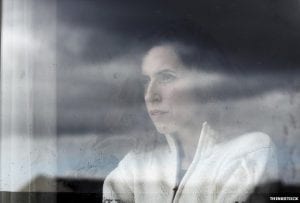
As the nation progresses further into the heart of winter with continuously cold and dark days, the season’s lack of light can induce changes in your mental stability.
While occasional waves of sadness, or “winter blues,” are not necessarily uncommon during the winter months, these instances can snowball into a more serious and severe type of depression known as seasonal affective disorder.
A relatively new disease, seasonal affective disorder, more commonly known as SAD, is classified by full-blown major depressive episodes that take form most often around the transition between seasons.
“It usually depends on the latitude but the farther north you go, the earlier it is going to set in,” Clinical Professor of Psychiatry at Georgetown University’s School of Medicine Dr. Norman Rosenthal, M.D., said. “For most people in the mid-Atlantic region, SAD sets in usually around October.” January and February are the worst.
Even though a person’s residential location can influence their predisposition to the illness, many other factors come into play as well, including, gender, genetics and stress levels.
Women in their 30s and 40s are most prone to developing the disorder, although men can still suffer from it.
“It’s maybe three to four women to one man,” Rosenthal, author of “Winter Blues” and “The Winter Blues Survival Menu,” said. “We think it is the female sex hormone that makes the brain more susceptible to the changes in light.”
Genetics may also play a role, as some cases have found a relation between various gene variations and seasonal affective disorder, according to Rosenthal.
However, one of the largest determining factors is stress, which can trigger SAD symptoms, causing them to manifest and result in the full-scale disorder.
Due to the fact that the initial behavior changes prior to the fully developed disorder may be subtle and unnoticeable, diagnosing SAD can prove to be difficult.
The most common symptoms of the disorder include significant and impairing fatigue, sleeping more hours per day than usual, a weight gain of at least 5 percent, a pervasively sad mood, loss of interest in activities, difficulty concentrating, guilt that affects self-esteem and additional symptoms also associated with depression.
Unlike many other psychological disorders, SAD can be cured without a visit to the doctor.
“Reduce stress wherever you can and get more light,” Rosenthal said. “Get outdoors more or get in the snow on a sunny, winter day.”
Bringing more light into the home can also help, as a lighter color of paint can aid in reflecting the light, according to Rosenthal.
Seasonal Depression is real. Now is the time to do something. Don’t let this winter wreck your mood, diet, and enthusiasm for life! SunBox light therapy 15-30 daily can relieve the blahs and get you feeling better within a few days.

